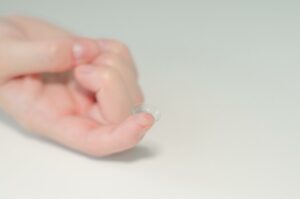Social care system in sustained crisis despite ‘record’ investment, report finds

2023 Sector Pulse Check report describes the current situation in social care as “arguably more perilous than ever”.
Unsustainable financial and workforce pressures are forcing adult social care providers to turn down new admissions and close services, as government grants are not reaching the people who need them most, according to a new report commissioned by Care England and the learning disability charity, Hft.
Based on a large-scale survey of adult social care providers, the 2023 Sector Pulse Check report finds that despite the sector receiving a £7.5bn funding boost in Chancellor Jeremy Hunt’s 2022 Autumn Statement, there has been little progress in the key challenges facing social care.
In a statement, Care England described the current social care environment as “arguably more perilous than ever.”
Professor Martin Green OBE, Chief Executive of Care England, commented: “The narrative that social care is under pressure is not a new one. What’s disappointing is that we find ourselves in a worsening crisis amid the Government’s narrative of ‘record investment’ into the sector.
“While the Government did make substantial commitments in the 2022 Autumn Budget, the outcomes have not matched the ambition. The new money into the sector has not led to tangible change or any significant progress towards ‘fixing adult social care’.
The report highlights how headwinds facing the social care sector include rapid and dramatic energy cost increases and unfunded rises in the National Living Wage, which contributed to 40 per cent of adult social care providers ending 2023 in deficit, the report says.
Recent funding initiatives from the government, such as the Market Sustainability and Improvement Fund and the International Recruitment Fund, have failed to mitigate funding concerns for the majority of providers, the report states; 84 per cent of care providers surveyed said that these measures made no difference to their organisation’s overall financial sustainability over the past year.
This has resulted in a reduced capacity for the sector to deliver care across providers, and the report finds that:
- 43 per cent of providers closed services or handed back contracts;
- 18 per cent offered care to fewer people;
- 39 per cent considered exiting the market altogether.
Workforce challenges remain widespread
The findings are concerning for a sector already facing deep-rooted and systemic challenges, particularly around workforce retention and recruitment. Despite a recent rise in international recruitment, staffing shortages remain widespread across the sector, with approximately one in 10 posts vacant in 2023/23. Nearly half (44 per cent) of organisations had to turn down admissions due to a lack of staff in 2023, the report finds.
Care England’s statement argues that the government’s approach to mitigate workforce are not working, and cites the recent tightening of overseas care staff and growing concern over the state of local government finances. Hft and Care England are calling on the government to implement immediate measures to support the care sector, including improving commissioning practice, revising VAT arrangements and removing barriers to ethical international recruitment.
Professor Martin Green OBE added: “It’s clear that the way our system is funded needs a rethink. For years, adult social care providers have absorbed increased costs and inflationary pressures without corresponding funding. When money is made available it simply isn’t cutting through. Recent changes to immigration rules and an insufficient Local Government Finance Settlement this year further suggest a government that is heading in the wrong direction. The sector’s needs are now on red alert.
“Our long-term vision remains one of a sustainable sector that is financially viable and an attractive destination for staff. While this may seem a distant reality, there are a range of policies at the Government’s disposal that would help turn the tide and put us on the path towards a sustainable future. As we count down to a general election, the Government must now make good on their promise to fix our sector.”
Steve Veevers, Chief Executive of Hft, said: “It is difficult to offer words of hope and motivation when the past 12 months have seen the adult social care sector engulfed in a sustained state of crisis.
“Despite moving away from the immediate challenges posed by the COVID-19 pandemic, there has been little respite from the fundamental financial and workforce pressures that have faced our sector for many years. The fact that 43% of providers told us they closed a part of their organisation or handed back contracts last year is testament to this.
“Our report provides several realistic, practical and impactful suggestions – including reforming VAT, revisiting the new visa laws for international workers and establishment of national commissioning standards – which we shouldn’t delay in implementing if we want to see real change from the next Government.”
Speaking to ICJ at the launch event, Veevers argued that ICSs, with their remit for joining local services, present an ideal avenue through which to improve access to social care. However, in line with recommendation area four in this year’s Sector Pulse report, he stressed that social care representation on integrated care boards and integrated care partnerships needs to increase in order to adequately reform the sector.
The full 2023 Sector Pulse Check report can be accessed here.












